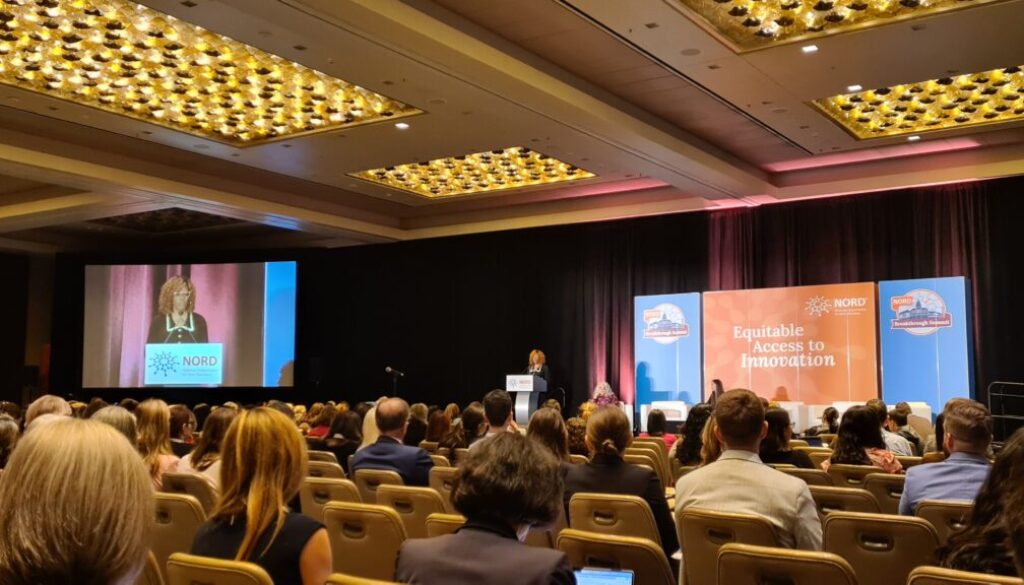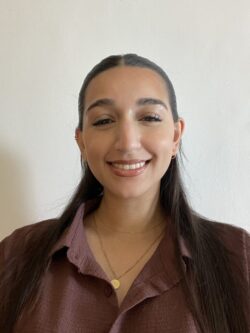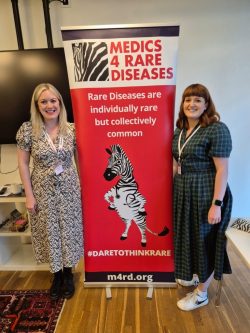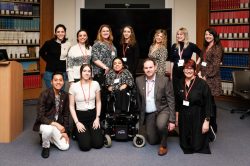Attending NORD! (The National Organisation for Rare Diseases) by Agata Oliwa
I had the amazing opportunity to attend the National Organization for Rare Diseases (NORD) Breakthrough Summit taking place in Washington, DC, USA between 20-22nd of October this year to present a poster on M4RD’s work on the RISE project. The RISE is a UK-wide study assessing medical students subjective and objective knowledge about rare diseases. I have had the pleasure of working on this project from its very beginning and so I was really excited to share its findings at this international conference. I was also really excited to hear from and connect with many different people working in the area of rare diseases.
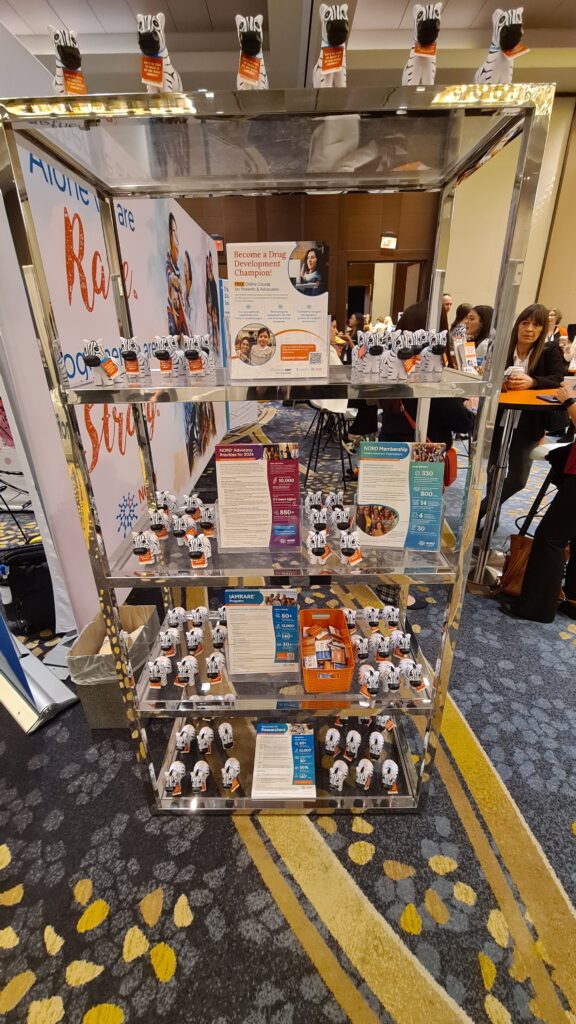
NORD goodies including small zebra mascots.
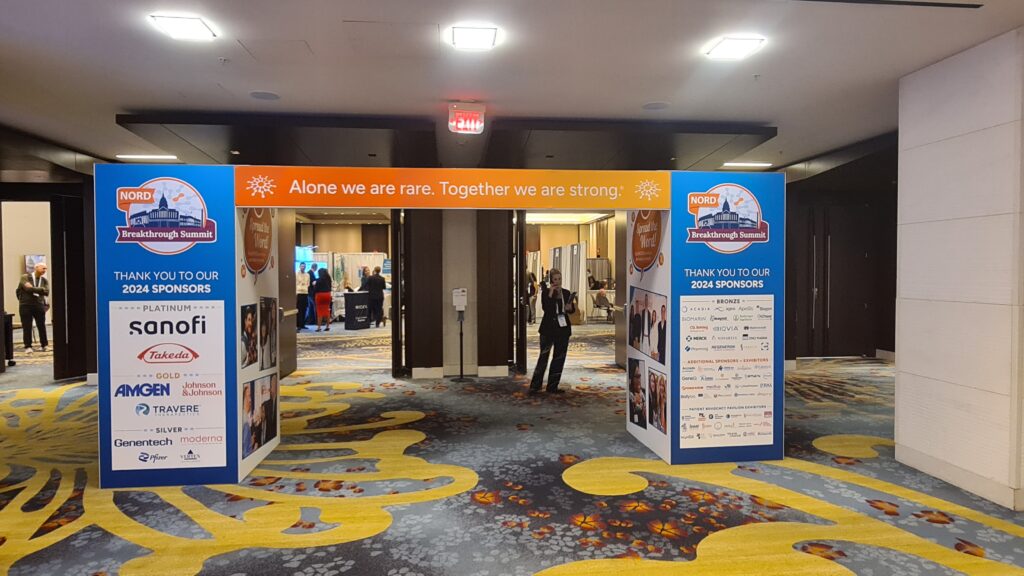
Conference venue including NORD’s motto ‘Alone we are rare. Together we are strong”.
Patient’s and carers’ perspective
The conference started with patient’s and carers’ voices. Their powerful and moving stories served as an important reminder why we were there, but also that we have a long way to go.
The story of Tanita Allen was particularly poignant. She described her diagnostic odyssey after suffering with involuntary movements for many years. During this time, she was presumed to be a drug addict and was not tested for Huntington’s disease because “Black people don’t get Huntington’s” and she also did not have a family history of this condition. When she was finally diagnosed, she could not believe it or accept the diagnosis as she had been repeatedly told that it was impossible for her to have it so many times. She was given a poor prognosis, suggesting that by the age she is now she would be relying on others for her care. However, she defied this prognosis, has written a memoir and is in the process of obtaining a second university degree since her diagnosis.
Tanita’s story highlights that we have a lot of work to do in the area of medical education about rare diseases. Huntington’s disease most commonly affects patients of European ancestry and is most commonly inherited from an affected parent. However, while the medical school adage says ‘common things are common’ it does not mean that rare things are impossible, i.e. Black people can also be affected by Huntington’s disease and the condition can be de novo as well. While a single doctor can’t know everything about all rare diseases, if only any of the doctors that saw Tanita kept an open mind and searched a reliable rare disease search engine (e.g. OMIM) or briefly consulted medical literature, her diagnostic odyssey could have been shortened.
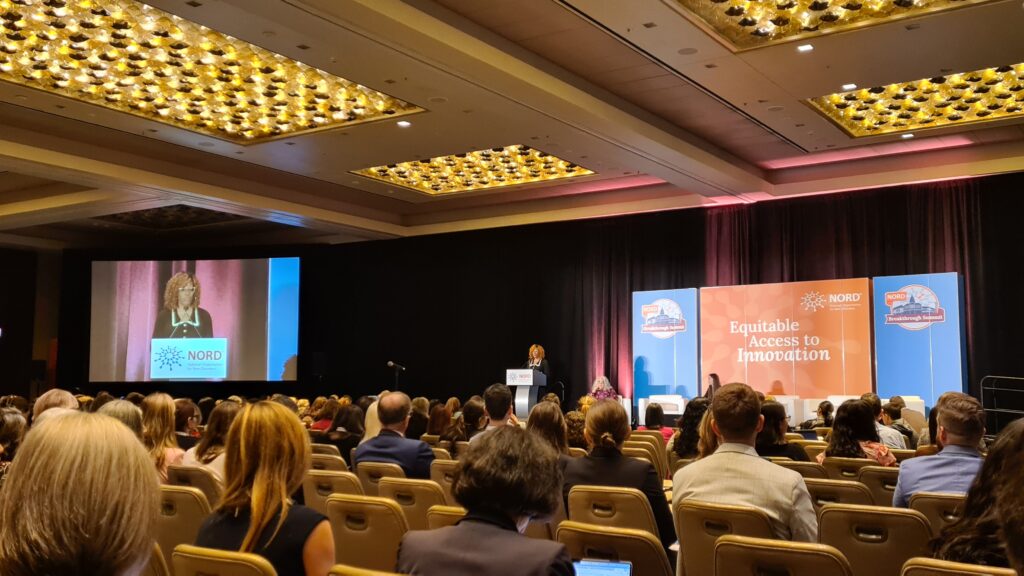
Tanita Allen on stage sharing her story
Research
There were multiple sessions focusing on research, including innovative methods used in rare disease research and perspectives from researchers (from NIH), regulators (FDA) and industry (pharmaceutical companies) were presented. Some of those include basket and platform trials and platform technologies, synthetic control groups (e.g. using a previous natural history study as control groups), the use of digital technologies, decentralised and pragmatic trials and use of real-world evidence.
The discussions that I found most interesting were those about platform technologies. They are defined by the FDA as technologies that are used in drugs that are already approved, there is evidence to suggest that it could be used by more than one drug without compromising quality and safety, and its use could speed up the drug development and review process. Everyone will have heard about one of the platform technologies, mRNA based vaccines including those for COVID-19. Other examples include gene therapy vectors, drug delivery systems and monoclonal antibodies. Representatives from the FDA said that there are active discussions about platform technologies at the agency and a recent draft guidance on platform technologies designation has been released. There have been some panel discussions during the meeting on what technologies might get the platform designation in the future. Some wondered if maybe CRISPR-Cas9 or prime editing technologies would be granted this designation. Of course, this would be very exciting as it would significantly reduce costs of drug development and thus make these therapies more accessible, however there are still obvious safety concerns. It will be really interesting to see what the FDA decides about this. Excitingly, platform technologies seem to be on the European Medicine’s Agency agenda this year as well.
The meeting closed with a session entitled “Blue sky thinking: what strategies will move the needle most for the rare community”, where various rare disease stakeholders discussed ways to advance innovation in rare disease. It was quite an optimistic session with multiple exciting ideas and projects discussed. One that definitely stood out was the Every Cure non-profit organisation set up by David Fajgenbaum, which focuses on drug repurposing for rare diseases. He set it up after his own life was saved with a repurposed medication. They use AI-methods to analyse disease pathophysiology and try to match it with existing drugs and their mechanism of action. Over the last 15 years they have repurposed 28 drugs for various conditions, but now they hope their new methods will help them do this on a larger scale.
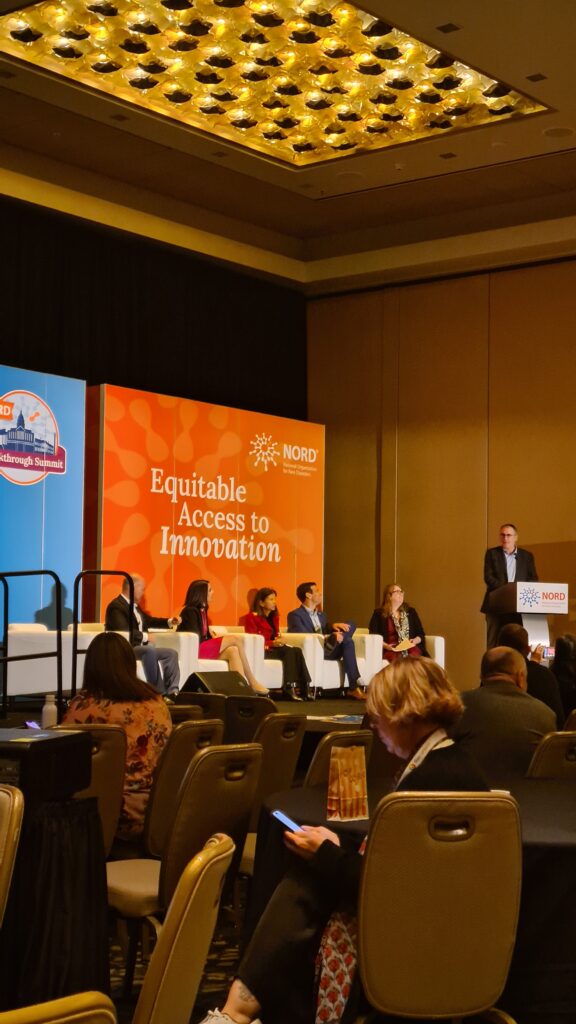
Closing session of the meeting
Gene therapy
For a genetics enthusiast like me, it was quite exciting that as we were discussing equitable access to innovations in rare disease (the theme of the summitt), the first patient ever to have received gene therapy for sickle cell disease (SCD) in the US was being discharged from the National Children’s Hospital in… Washington, DC.
However, this also made me think about the inequitable access to innovative therapies on a more global scale. In some regions of Africa, where SCD is actually a common condition, the morbidity and mortality are highest in the world and there is limited access to any therapies for SCD (Fig 1 & 2).
Fig 1. Estimated number of newborns with SCD on a map of the world. Source: https://link.springer.com/chapter/10.1007/978-3-319-06713-1_14
Fig 2. Childhood survival in different regions of the world
Back in medical school, I did an elective in sickle cell disease in Dar es Salaam, Tanzania, where I saw that many patients struggled to afford hydroxycarbamide to reduce the frequency of sickle cell crises or penicillin V to reduce the risk of infections with encapsulated bacteria. With that in mind, the contrast to the US, where a patient was just given a cure for the disease, which costs $3.1 million and was luckily covered by his medical insurance, is stark.
During the summit, there were discussions about access to gene therapies, however they mostly focused on the US. The main conclusion from them is that a new funding model is needed, as they will only become less and less accessible as more gene therapies are approved in the coming years. Nothing concrete was proposed though.
Networking
During the meeting I connected with many interesting attendees who had various involvement with rare diseases. One of the most interesting attendees I met was Aleksandra Foksinska, who has a science background and currently works as a project manager at the University of Alabama at Birmingham Hugh Kaul Precision Medicine Institute. She was presenting a poster on organising and running essentially an equivalent of an elective in precision and genomic medicine for first year medical students. The programme included training on rare disease, case-based learning and development of basic academic skills like literature review and poster presentation. I would have loved to completed this programme when I was in my first year of medical school. I was very pleasantly surprised that while developing this programme the team have come across M4RD’s Rare Disease 101 online course, found it helpful and have included it in their training!
Aleksandra Foksinska’s poster on Summer in PREcision Medicine (SUPREME): An Immersive Research Experience in Precision and Genomic Medicine
During my poster presentation I connected with various different attendees, from pre-medical students, different charity representatives, basic science researchers to company representative working in the area of rare diseases. No one was really surprised with our findings, but they were glad to see the data to prove it. I had some questions about what now and how we would propose to change and improve the medical education about rare diseases, which gave me the opportunity to share M4RD’s work, especially the Rare Disease 101 course. Some attendees wondered if the results in the US would be any different. The word is out that there are plans to replicate our study at the University of Pennsylvania, so hopefully we will find out soon.

